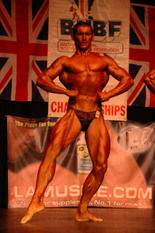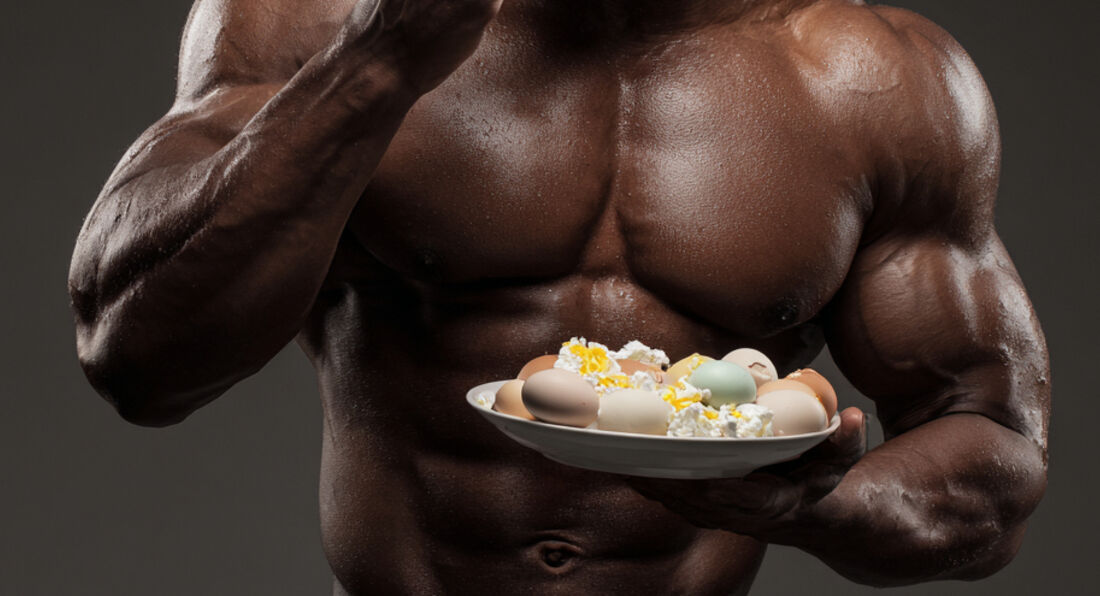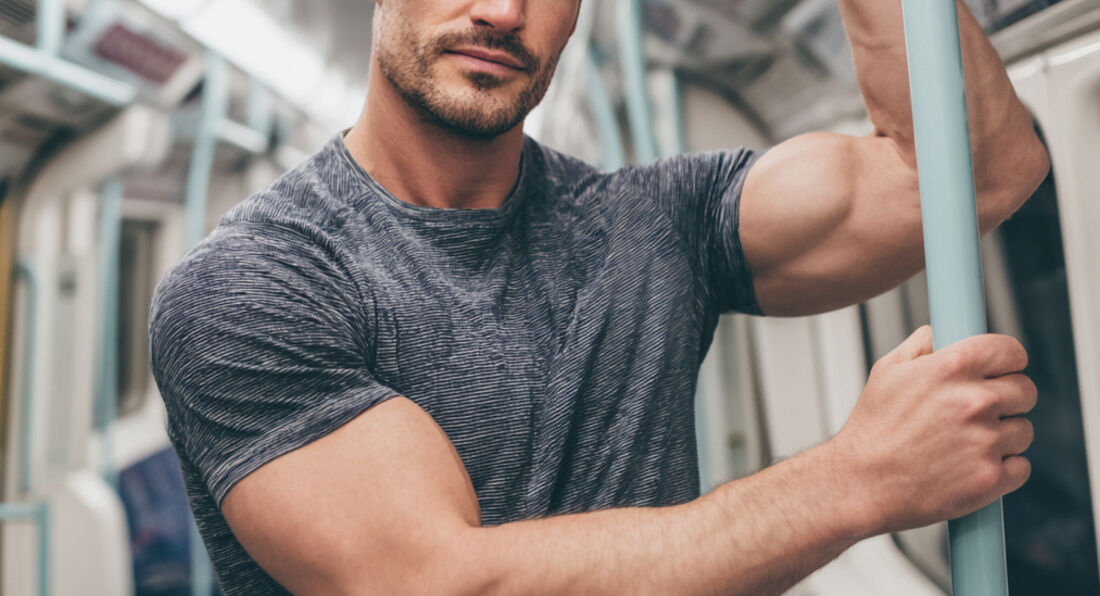The Knowledge > How To Build Muscle >
Sunday, 18th January 2009
Iron Alternatives for more muscle mass
Cutting-edge article by Glen Danbury
By LA Muscle on 18.01.2009 11:23 am
Iron alternatives
by Glen Danbury, BNBF Central Overall Champion
 Since the early part of the last century barbells and dumbells have been synonymous with body building. Even today when most gyms have resistance machines that rival NASA in terms of technology, old fashioned iron free weights are still touted as being number one for physical development. This is for a good reason - they work!Yet there are times when even a tool as simple as barbells and discs of iron are not available. Presented below are five alternatives that at a push could replace your beloved iron for a short period like a holiday or even as ancillary movements to compliment the free weight basics.
Since the early part of the last century barbells and dumbells have been synonymous with body building. Even today when most gyms have resistance machines that rival NASA in terms of technology, old fashioned iron free weights are still touted as being number one for physical development. This is for a good reason - they work!Yet there are times when even a tool as simple as barbells and discs of iron are not available. Presented below are five alternatives that at a push could replace your beloved iron for a short period like a holiday or even as ancillary movements to compliment the free weight basics.
Medicine balls
Technically medicine balls are weights with some form of covering, yet they are often dismissed as only suitable for athletic development, yet this is far from the truth.
Although the actual weights used in medicine ball movements are much reduced compared to the free weight basics, the nature of the movements can lead to equal tension on the muscles and can often recruit some of the fast twitch fibres that are beyond the reach of standard weight movements.
The major benefits of medicine balls relates to the fact that they can be used in a ballistic (explosive) manner. This has been shown to recruit the highest threshold fast twitch fibres that are only activated in such movements.
Considering that fast twitch fibres have the largest potential for growth, a move to a few medicine ball ballistic movements could produce new growth. Most people try to train explosively with free weights, yet this is somewhat misguided as free weights are not going to be constantly accelerated throughout the whole range of movement (except Olympic lifts). The reason most free weights lack constant pace is that at the distal (furthest away) range of motion the antagonist muscle will contract to maintain joint integrity (in other words stopping your arms from being ripped from their sockets due to the accelerated weight). Medicine balls differ because they can be released at the last moment and therefore constantly accelerated. Below are two medicine ball movements that can be performed explosively.
Most people try to train explosively with free weights, yet this is somewhat misguided as free weights are not going to be constantly accelerated throughout the whole range of movement (except Olympic lifts). The reason most free weights lack constant pace is that at the distal (furthest away) range of motion the antagonist muscle will contract to maintain joint integrity (in other words stopping your arms from being ripped from their sockets due to the accelerated weight). Medicine balls differ because they can be released at the last moment and therefore constantly accelerated. Below are two medicine ball movements that can be performed explosively.
Medicine ball chest pass - feet shoulder width apart, knees slightly bent hold a medicine ball at chest height elbows raised so they are the same height as the ball. Push the ball straight out in front of you as fast as possible and let go at the end. If you are working with a partner get them to catch it and through it back to you. When you catch it, immediately chest pass it back, this is perfect for developing reactive strength. If you are working alone jog over and pick it up turn round and through it back this will only improve explosive strength as it removes the stretch shortening cycle.
Jumping lunges - start off in a lunge position, with one foot in front of the other shoulder width apart. Hold a medicine in both hands in front of you at chest height and elbows bent so that you look like the bottom position of a close grip overhead press. Lunge down to the ninety degree position and explode upward, simultaneously pushing the ball overhead as you leave the ground. At this point you can either land in the same position and repeat or swap leg positions mid air, swapping continuously with each rep.
Car pushing
 This one often draws funny looks from the neighbors. Pushing your car doesn't sound appealing but can be great for building up leg and upper body strength. Listed below are variations as to how to push your car in order to hit different body parts or increase intensity.
This one often draws funny looks from the neighbors. Pushing your car doesn't sound appealing but can be great for building up leg and upper body strength. Listed below are variations as to how to push your car in order to hit different body parts or increase intensity.
1. Pushing facing away from the car-
By facing away from the car with your lower back and hips against the car you can adequately target your quads as each step will be similar to a leg extension but in a closed chain environment.
2. Pushing facing the car-
By pushing facing forward and your upper body pressed against the car you will shift the workload to your hip extensors (glutes and hamstrings)
3. Pushing solely with your upper body-
Facing the car plant your feet and push solely with your upper body. Once you reach full extension, step forward replant your feet and push again with your upper body. As well as providing a great amount of work for your chest shoulders and triceps, your abs and midsection will have to work like crazy to stabilize you.
4. Dragging -
if your vehicle has a tow bar or sturdy bumper you can attempt to drag the car, with either pure upper body (back) or just using your lowerbody (lowerback, gluts and hamstrings).
Depending on how strong you are there are several ways of making it harder. You can either try to cover the same distance in a shorter time, push the vehicle up a shallow incline, get someone to apply gentle pressure on the brakes or lastly stop being a cheap skate and buy a bigger car!
Isometrics
Gaining popularity through the mail order business of Charles atlas comes the good old stand by of isometrics. Isometrics basically involves contracting the muscle against an immovable object, so that tension is developed whilst the muscle stays the same length (iso = same, metric = length). Reasonable strength can be built from isometrics as near maximal muscle contractions can occur, but there are several caveats to consider.
Firstly the gains in strength from isometrics only appear to benefit the joint angles actually trained (i.e. if you perform an isometric contraction at 90°, you will only gain strength around that angle, give or take ten degrees either way). This can have draw backs as one isometric contraction will not translate well to gains during dynamic full range motions. As such multiple training positions are needed to train a muscle group's full range of motion.
Multiple training positions are vital for postural considerations. If a muscle is trained repeatedly in a fully contracted position there is an increased chance of active shortening, where the muscles natural resting length shortens. This can lead to postural problems long term. The other draw back is that Isometrics tend to elevate blood pressure, as such individuals with hypertension should use cautiously if at all. Although Isometrics have draw backs, they do have great advantages as well. Firstly isometrics allow near maximal contractions to occur, which is vital for improving intramuscular co-ordination (an essential component of maximal strength development). Near maximal muscle contractions usually only occur during one rep max lifting and then for only short periods of time as biomechanical factors such as leverage and momentum gained through pace mean maximal loading only occurs briefly. Fortunately isometrics allow maximal contractions to occur and held for longer, which should translate into faster strength and size gains.
Although Isometrics have draw backs, they do have great advantages as well. Firstly isometrics allow near maximal contractions to occur, which is vital for improving intramuscular co-ordination (an essential component of maximal strength development). Near maximal muscle contractions usually only occur during one rep max lifting and then for only short periods of time as biomechanical factors such as leverage and momentum gained through pace mean maximal loading only occurs briefly. Fortunately isometrics allow maximal contractions to occur and held for longer, which should translate into faster strength and size gains.
Secondly isometrics can give you instant boosts in strength by causing post tetanic potentiation. This basically means that the period post maximal contraction facilitates strength in a muscle group due to increased calcium levels in the muscles and decreased neurological inhibition. Isometrics also allow an individual to train when a joints injured as maximal muscular contractions occur whilst the joint undergoes minimal movement.
Below is an example of how to perform multiple contractions for a single muscle group using the chest as the example.
Start by standing in front of a wall with a staggered stance (one foot behind the other, about a foot apart).places your hands on the wall just outside shoulder width apart and lean forward so that your upper arms are in line with your body. This is the stretched position. Push against the wall as hard as you can keeping the same position. Hold the contraction for six to ten seconds.
The mid range position will mean moving back slightly so your arms are only bent to about 45°. Again push as hard as possible and hold the contraction for another six to ten seconds. Lastly step away from the wall and clasp your hands in front of you with your arms raised to chest height. This will be the full range or fully contracted position. Contract and hold for six to ten seconds. Repeat the sequence several times, as one sequence equals on set. With a bit of imagination virtually all body parts can be trained in this manner.
Partner assistance
A popular one with some personal trainers. This involves performing a movement but instead of using weights a partner will provide resistance for the movement by resisting your actions.
A good example would be side lateral raises. Sit on a bench keeping your back flat throughout. Your partner stands behind you. Keeping your arms bent at 90° raise your arms to the sides as the partner applies constant pressure against the movement by pushing down against your elbows. Lower your arms whilst resisting your partners' pressure. Your partner should be able to apply enough pressure for you to be able to apply a constant maximal contraction throughout the full range of movement (unless you train with a pencil neck to make yourself look better - shame on you).
The constant near maximal contraction throughout the movement should lead to faster gains in strength and size.
Body weight
When push comes to shove there is nothing better than relying on your own fleshy load as resistance. Its portable, inexpensive and no other big sweaty ape can sit on it and monopolize it for what seems the whole duration of your workout. What's that I hear- press ups and bodyweight squats are too easy? No problems try these two exercises if you can.
Two point press up - get down into a press up position. Tense your midsection in order to remain flat backed throughout. Now raise one arm and the opposite leg. You should be resting on just one arm and the diagonally opposite leg (hence the two point position). Now perform a press up keeping your arm raised out in front and the other leg in line with your body. See how many of those you can do and make sure you match it with the other arm.
Single leg squat - hold one leg out in front, raise your arms in front to aid in balance and squat down keeping your upper body as upright as possible. If you're right handed start off with the left leg and match it with the right side and vice versa for you lefties. If it's to easy start to raise your arms further up overhead which will increase the mechanical loading to the quads.
Between all the above you may never feel the inclination to touch a barbell again - okay maybe not but you can still get a good workout without weights. You may even find that the novel stimulus of these activities will allow you to come back from your holidays stronger than you left.





























